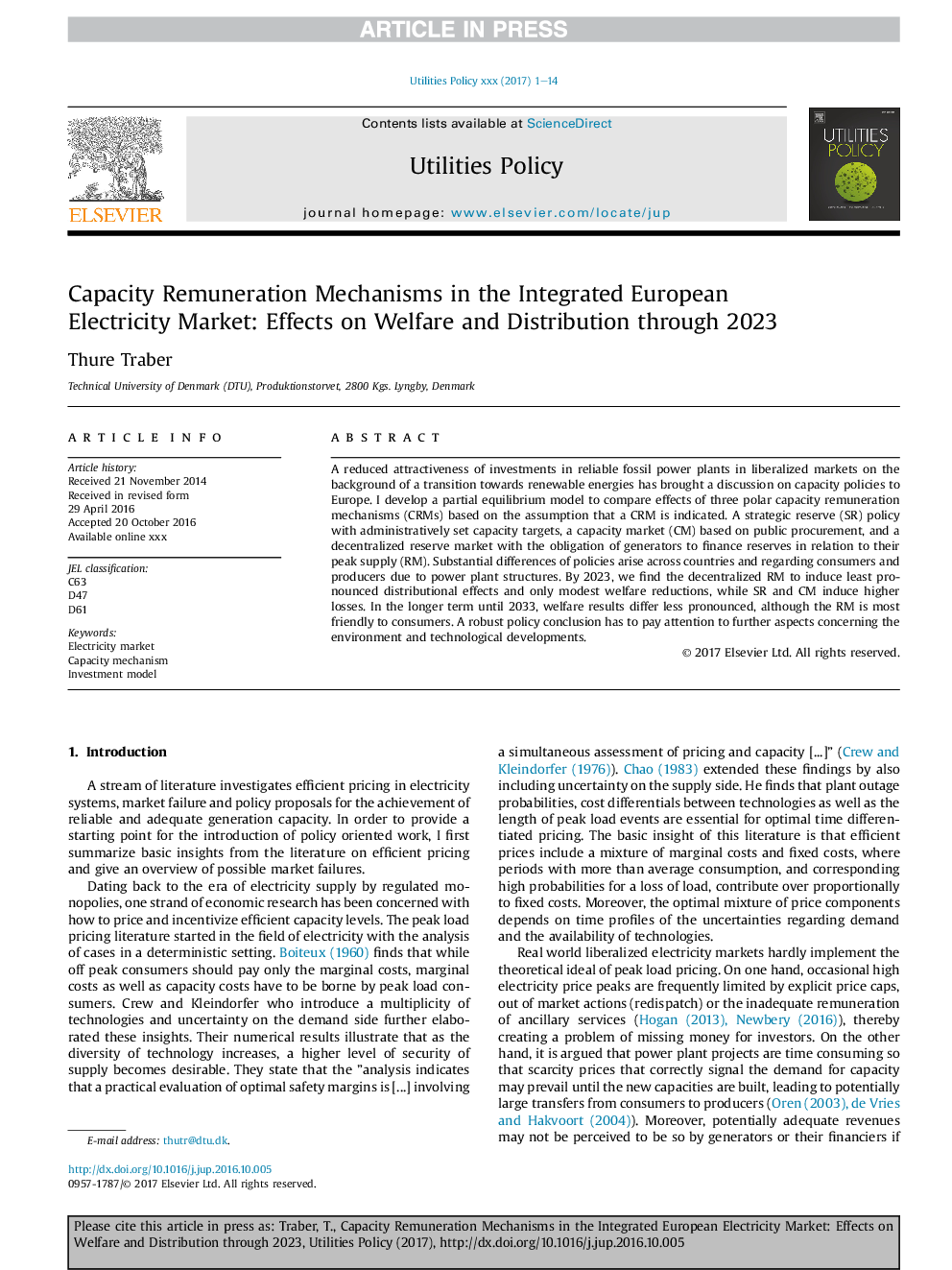| Article ID | Journal | Published Year | Pages | File Type |
|---|---|---|---|---|
| 5106777 | Utilities Policy | 2017 | 14 Pages |
Abstract
A reduced attractiveness of investments in reliable fossil power plants in liberalized markets on the background of a transition towards renewable energies has brought a discussion on capacity policies to Europe. I develop a partial equilibrium model to compare effects of three polar capacity remuneration mechanisms (CRMs) based on the assumption that a CRM is indicated. A strategic reserve (SR) policy with administratively set capacity targets, a capacity market (CM) based on public procurement, and a decentralized reserve market with the obligation of generators to finance reserves in relation to their peak supply (RM). Substantial differences of policies arise across countries and regarding consumers and producers due to power plant structures. By 2023, we find the decentralized RM to induce least pronounced distributional effects and only modest welfare reductions, while SR and CM induce higher losses. In the longer term until 2033, welfare results differ less pronounced, although the RM is most friendly to consumers. A robust policy conclusion has to pay attention to further aspects concerning the environment and technological developments.
Related Topics
Physical Sciences and Engineering
Energy
Energy (General)
Authors
Thure Traber,
